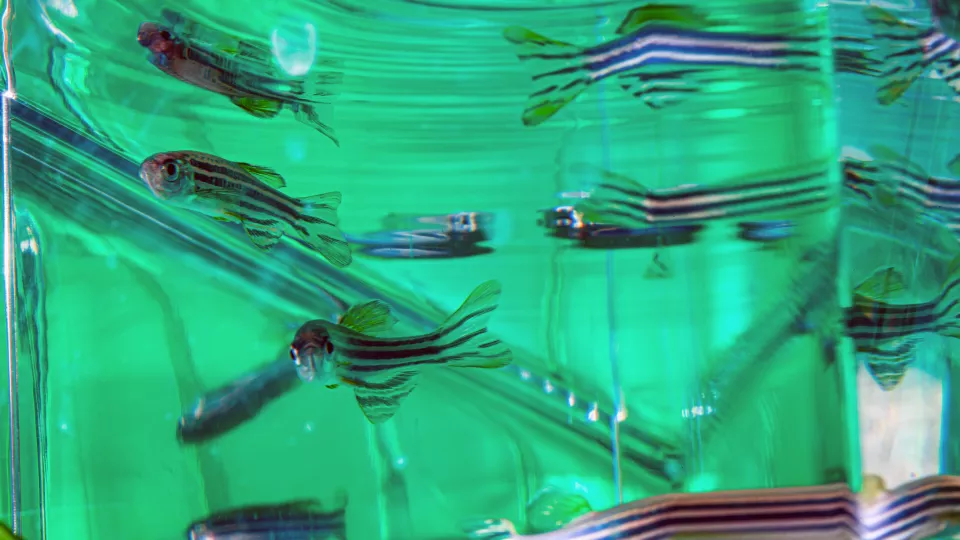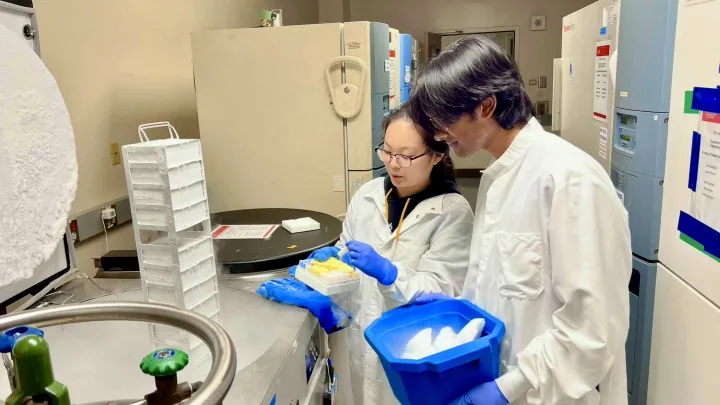
The Tiny Fish With Big Impact
What does a tiny fish have to do with pediatric cancer? A whole lot, as it turns out. The zebrafish—only about an inch in size—is one of the most powerful biomedical research tools in use today. Children’s Hospital Los Angeles recently invested in a brand-new, 3,000-square-foot facility to harness the power that this little vertebrate has to offer.
Cancer researchers ask hundreds of questions daily. It’s their job. But all their questions stem from a single one—the most important one: How can we understand what causes cancer? For pediatric cancers, in particular, this is even more challenging. Pediatric cancers are not only rare, but they’re also different from adult cancers, which often stem from aging and environmental factors. In children, cancers may arise from genes that have mutated during development. Researchers often turn to animal models to better understand what’s happening on a cellular level.
Enter the zebrafish, a freshwater member of the minnow family. This tiny creature has several features that make it ideal for research. Perhaps most importantly, their entire genome has been sequenced, meaning investigators have a molecular map of every gene. Humans share a striking 70% of genes with these fish. What’s more, approximately 85% of human genes associated with disease have a counterpart in the zebrafish. Scientists can study how a gene associated with cancer works in the zebrafish—how mutations in the gene cause cells to become cancerous, and how the cancer cells interact with blood vessels, the immune system and other tissues—and can then apply this information to new treatment studies.
James Amatruda, MD, PhD, leads the new Alfred E. Mann Family Foundation Zebrafish Laboratory at Children’s Hospital Los Angeles, which can house more than 100,000 zebrafish. As Head of Basic and Translational Research in the Cancer and Blood Disease Institute, Dr. Amatruda has big ambitions. “We need to study cancer on a large scale,” he says. “It’s the only way to truly understand what drives it.”

In normal development, cells divide rapidly until an organ forms. Then, the organ matures, which involves slower, more controlled cell division. In many childhood cancers, the cells do not mature and instead never stop rapidly dividing. Dr. Amatruda investigates many pediatric cancers, including the model his own team developed for rhabdomyosarcoma, a muscle cancer that develops in children. Using the zebrafish, his team found a specific gene that disrupts muscle development, locking cells into rapid division. And because zebrafish mature quickly—reaching adulthood by about 90 days—investigators can monitor development of these cancers within weeks.
The ultimate goal? To improve upon pediatric cancer treatments. While chemotherapies and other treatments have vastly improved pediatric outcomes over the last few decades, they still are associated with many side effects and toxicities. Dr. Amatruda feels we’ve reached a plateau. “We need to know more in order to level up in our fight against cancer,” he says. Knowledge gained from his work—and the work of other pediatric cancer researchers—can set the stage for more targeted treatments.


